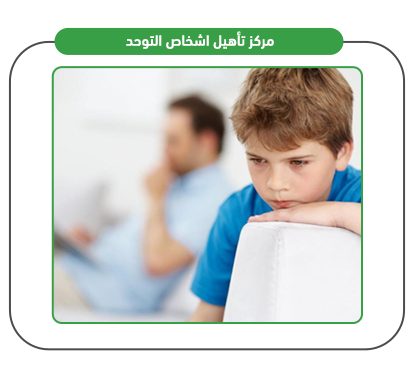The Autism Rehabilitation Center is a community service initiative offering a comprehensive array of services, including speech therapy, behavioral therapy, psychotherapy, and academic rehabilitation programs. With the goal of enhancing the quality of life for individuals with autism, the center focuses on fostering their social skills and promoting self-reliance. Additionally, the center emphasizes family support and guidance as a crucial component to ensure optimal benefits from these services.

The Autism Rehabilitation Center is a community service initiative offering a comprehensive array of services, including speech therapy, behavioral therapy, psychotherapy, and academic rehabilitation programs.
With the goal of enhancing the quality of life for individuals with autism, the center focuses on fostering their social skills and promoting self-reliance. Additionally, the center emphasizes family support and guidance as a crucial component to ensure optimal benefits from these services.
Mashroo3k for Economic Consulting is delighted to offer a feasibility study for Autism Rehabilitation Center, adhering to the latest international standards in this field. Our services are distinguished by their methodological rigor, comprehensive approach, connectivity, and forward-thinking capabilities. Leveraging our extensive database covering all Middle Eastern markets, along with a team of highly experienced, competent, and professional consultants.



Quality of all types of services provided The existence of an integrated and strong advertising plan for the center The presence of entertainment areas and residential areas in the center Organization and sophistication in providing services to patients Availability of a number of technicians and experienced people from all over the world Using high technology in the treatment and rehabilitation of patients Supervision and management with precision and discipline in work Taking care of the general cleanliness of the center Accept opinions, take the advice of others, and work to implement it Extreme care in maintaining the center’s operating requirements
Executive Summary
Project Service/Product Study
Market Size Study
Study of Risks

Service Sector in the GCC Countries
According to macroeconomic sector theory, the economy is typically categorized into three primary sectors: The first involves the extraction of raw materials, encompassing industries like mining, timber, oil exploration, as well as agro-industries and fisheries. The second sector involves the production and sale of goods, including industries such as automotive manufacturing, furniture, and clothing trade. Conversely, the third sector, known as the “service” sector, focuses on providing intangible services, such as entertainment, healthcare, transportation, hospitality, and restaurants. As countries progress, their economies tend to shift towards greater reliance on the service sector, in contrast to less developed countries where the primary sector predominates. For instance, in the United States, the service sector accounts for 85% of its economy. The Kingdom of Saudi Arabia:
Qatar:
Kuwait:
The United Arab Emirates:
Oman:
The Global Service Sector The service sector is the major contributor to the global GDP; it alone accounts for more than three fifths of this GDP. The sector does not rely on producing tangible goods such as vehicles and furniture, but rather on providing intangible services such as banking, medical care, transportation, hospitality, entertainment, etc. The value of the sector market was estimated in 2020 at USD 10,814.49 billion and rose to USD 11,780.11 billion in 2021. Therefore, the market achieved a CAGR of 8.9%. After recovering from the effects of the corona virus pandemic, global market experts expect the sector market to reach USD15683.84 billion by 2025, bringing the market to a CAGR of 7% in the coming years.

Mashroo3k for Consulting recommends investing in the services industry, as its contribution to the GDP rose from 62.8% in 2010 to 65.7% in 2020. According to World Bank data, the contribution of this industry to the GDP is expected to rise to 69.6% by the year 2030.